Related Research Articles

The Smithsonian Institution, or simply the Smithsonian, is a group of museums, education and research centers, the largest such complex in the world, created by the U.S. government "for the increase and diffusion of knowledge." Founded on August 10, 1846, it operates as a trust instrumentality and is not formally a part of any of the three branches of the federal government. The institution is named after its founding donor, British scientist James Smithson. It was originally organized as the United States National Museum, but that name ceased to exist administratively in 1967.

Spencer Fullerton Baird was an American naturalist, ornithologist, ichthyologist, herpetologist, and museum curator. Baird was the first curator to be named at the Smithsonian Institution. He eventually served as assistant Secretary of the Smithsonian from 1850 to 1878, and as Secretary from 1878 until 1887. He was dedicated to expanding the natural history collections of the Smithsonian which he increased from 6,000 specimens in 1850 to over 2 million by the time of his death. He also served as the U.S. Commissioner of Fish and Fisheries from 1871 to 1887 and published over 1,000 works during his lifetime.

The National Museum of American History: Kenneth E. Behring Center is a historical museum in Washington, D.C. It collects, preserves, and displays the heritage of the United States in the areas of social, political, cultural, scientific, and military history. Among the items on display is the original Star-Spangled Banner. The museum is part of the Smithsonian Institution and located on the National Mall at 14th Street and Constitution Avenue NW in Washington, D.C.

The National Museum of Natural History (NMNH) is a natural history museum administered by the Smithsonian Institution, located on the National Mall in Washington, D.C., United States. It has free admission and is open 364 days a year. With 4.4 million visitors in 2023, it was the most-visited museum in the United States.
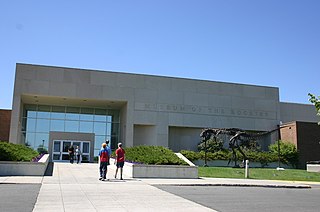
Museum of the Rockies is a museum in Bozeman, Montana. Originally affiliated with Montana State University in Bozeman, and now also, the Smithsonian Institution. The museum is largely known for its Paleontological collections as well as having the largest collection of North American Dinosaur fossils in the United States. They also possess the largest Tyrannosaurus skull ever discovered, as well as the thigh bone of a Tyrannosaurus rex that contains soft-tissue remains. The museum is part of the Montana Dinosaur Trail and is Montana's official repository for Paleontological specimens.

Fashion in the years 1750–1775 in European countries and the colonial Americas was characterised by greater abundance, elaboration and intricacy in clothing designs, loved by the Rococo artistic trends of the period. The French and English styles of fashion were very different from one another. French style was defined by elaborate court dress, colourful and rich in decoration, worn by such iconic fashion figures as Marie Antoinette.
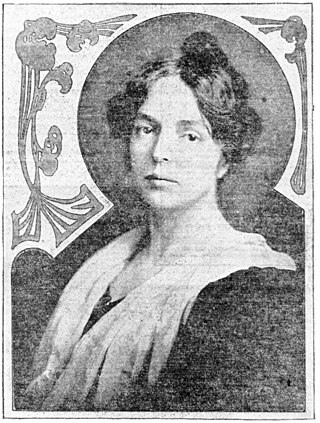
Theodora Alice Ruggles Kitson, known as Theo A.R. Kitson, was an American sculptor.

Fashion in the period 1700–1750 in European and European-influenced countries is characterized by a widening silhouette for both men and women following the tall, narrow look of the 1680s and 90s. This era is defined as late Baroque/Rococo style. The new fashion trends introduced during this era had a greater impact on society, affecting not only royalty and aristocrats, but also middle and even lower classes. Clothing during this time can be characterized by soft pastels, light, airy, and asymmetrical designs, and playful styles. Wigs remained essential for men and women of substance, and were often white; natural hair was powdered to achieve the fashionable look. The costume of the eighteenth century, if lacking in the refinement and grace of earlier times, was distinctly quaint and picturesque.

William Ralph Maxon, was an American botanist and pteridologist. He graduated from Syracuse University with a B.Ph. in biology, in 1898, and spent about one year at Columbia University doing post-graduate work on ferns with Lucien Marcus Underwood. In 1899 he accepted a position with the United States National Museum, which was a part of the Smithsonian Institution; he remained at the museum for his entire career. In 1899 he became an aide with the Division of Plants. He was named assistant curator in 1905, associate curator in 1914, and curator of that Division in 1937. He retired in 1946, but continued his association with the museum until his death in 1948.
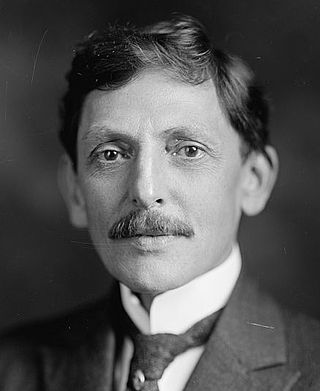
Paul Bartsch was an American malacologist and carcinologist. He was named the last of those belonging to the "Descriptive Age of Malacology".

A bathing dress was a mode of dress used for ladies' swimming/bathing activities during the 19th century. These bathing costumes originally included ankle length dresses, long pants, and long sleeves. Around the 1880s the sleeves and hemlines of these dresses were shortened to improve range of motion and general comfort.

Fashion in the twenty years between 1775 and 1795 in Western culture became simpler and less elaborate. These changes were a result of emerging modern ideals of selfhood, the declining fashionability of highly elaborate Rococo styles, and the widespread embrace of the rationalistic or "classical" ideals of Enlightenment philosophes.
Robert P. Multhauf (1919–2004) was an American science historian, curator, director, scientific scholar and author. He served as president of the History of Science Society in the year 1979-80, and was awarded the Leonardo da Vinci Medal in 1987.
Judith K. Zilczer is an American art historian and former museum curator. She is known for her work with artists such as Horace Pippin, Raymond Duchamp-Villon, Willem de Kooning, and Richard Lindner. Zilczer was interested in the connections between music and art, which she described as "the mystical strain of artistic synesthesia." She curated an exhibit titled "Visual Music: Synaesthesia in Art and Music Since 1900". Zilczer served at the Hirshhorn Museum and Sculpture Garden (HMSG) in various capacities from 1974-2003. In 1978, she organized for the Hirshhorn Museum "The Noble Buyer:" John Quinn Patron of the Avant-Garde, a detailed account of one of the most important collections of modern art assembled in the early years of the 20th Century. From 1992 to 2003, she was Curator of Paintings.
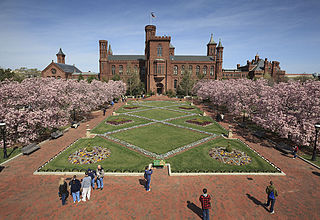
The Smithsonian Gardens, a division of the Smithsonian Institution, is responsible for the "landscapes, interiorscapes, and horticulture-related collections and exhibits", which serve as an outdoor extension of the Smithsonian's museums and learning spaces in Washington, D.C. Established in 1972 as a groundskeeping and horticulture program, Smithsonian Gardens currently manages 180 acres of gardens on the National Mall, 64,000 square feet of greenhouse production space, and the Archives of American Gardens, a research collection of over 60,000 photographs and archival records covering American landscape history from the 1870s to the present.
Charles Elmer Resser was an American paleontologist, born in East Berlin, Pennsylvania. He was educated at Pennsylvania State Teachers College, Franklin and Marshall College, Princeton University and George Washington University. Resser developed an interest in Cambrian fossils when he was a student of H. Justin Roddy at Franklin and Marshall College.

Yoshiko Iwamoto Wada is a Japanese textile artist, curator, art historian, scholar, professor, and author. She has received international recognition for her scholarship and expertise in the field of textile art. In 2010, she was named a "Distinguished Craft Educator - Master of Medium" by the James Renwick Alliance of the Smithsonian Institution, who stated: "she is single-handedly responsible for introducing the art of Japanese shibori to this country". In 2016 she received the George Hewitt Myers Award for Lifetime Achievement.
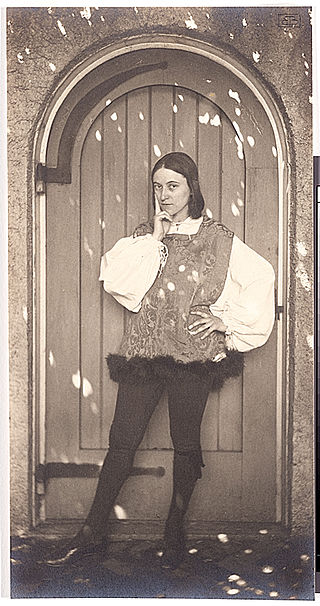
Edith Emerson was an American painter, muralist, illustrator, writer, and curator. She was the life partner of acclaimed muralist Violet Oakley and served as the vice-president, president, and curator of the Woodmere Art Museum in the Chestnut Hill neighborhood of Philadelphia, Pennsylvania, from 1940 to 1978.
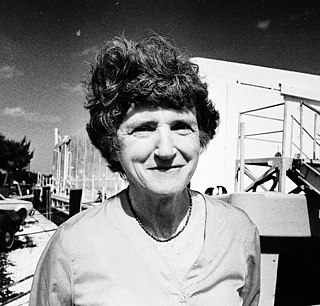
Mary Esther Rice was an American invertebrate zoologist specializing in systematics, evolution and the development of marine invertebrates. She worked at the Smithsonian Institution as a curator, educator, research advisor, and administrator from 1966 until her retirement in 2002. She is known for her work on the life histories of Sipuncula, as well as for serving as the first director of the Smithsonian Marine Station at Fort Pierce.

Margaret Brown Klapthor was a curator of the Smithsonian Institution's First Ladies collection and an expert on the history of the White House. She served as chairman of the National Museum of American History's Division of Political History.
References
[1] SIA RS00468 Curatorial Records, 1893, 1915, 1945-2010, Box 1
[2] SIA RS00468 Curatorial Records, 1893, 1915, 1945-2010, Box 2
[3] SIA RS00468 Curatorial Records, 1893, 1915, 1945-2010, Box 3
[4] SIA RU009603 African American Exhibits at the Smithsonian, KIDWELL-I1-ML-PMH.doc